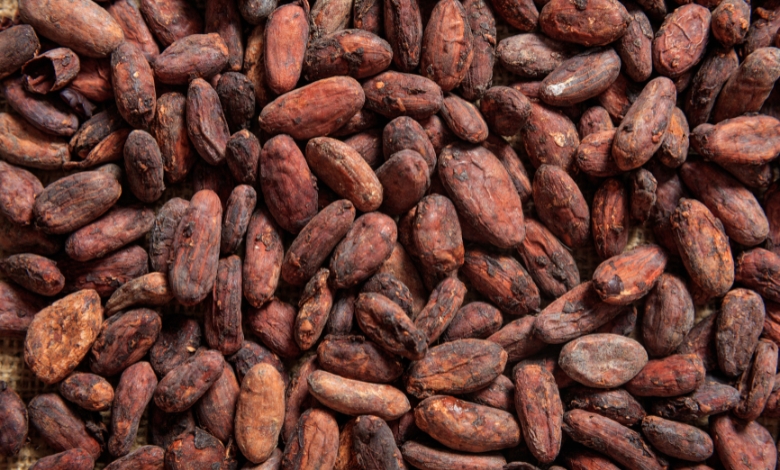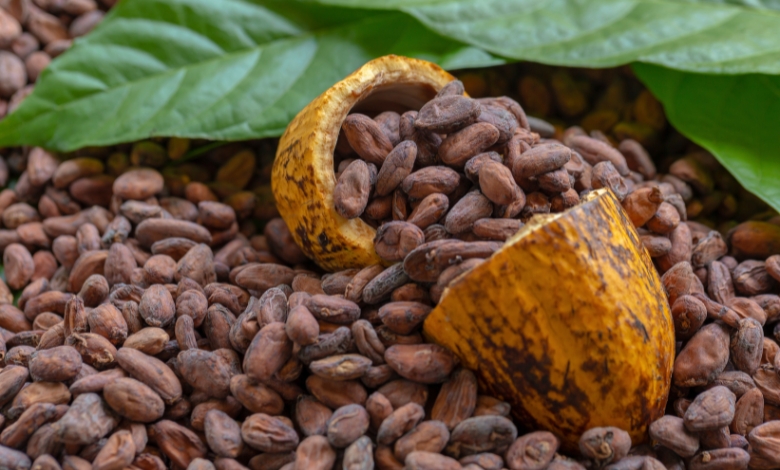Discover the big cocoa beans buyers in the United States of America and learn how to connect with them for successful partnerships.
You’ve put in years of hard work to create top-quality cocoa beans.
But now, breaking into the U.S. market and finding buyers seems nearly impossible—like searching for a needle in a haystack.
You might be asking yourself, “Where are these big buyers? What do they really want? How can I make my beans stand out while protecting my business model?”
Entering the U.S. market is no small feat, especially with so many players like manufacturers, wholesalers, and niche chocolate brands.
But here’s the good news: by learning more about the market, you’re already one step ahead.
That’s why I created this guide—to give you practical tips on who the big buyers are, how to approach them, and how to build real, lasting connections.
Let’s leave behind the “needle in a haystack” feeling and help you connect with the buyers who matter.
Article Breakdown
Understanding the Cocoa Market in the U.S.

Before we dive into connecting with buyers, let’s start with a snapshot of the U.S. cocoa market. Why? Because understanding the market will give you confidence that your product has a place here. Plus, it will show you the players and trends that can give you an edge.
Market Demand
The U.S. is one of the world’s largest consumers of cocoa, primarily driven by its massive chocolate and confectionery industries. Whether it’s classic milk chocolate bars, dark chocolate health supplements, or cocoa-infused cosmetics, cocoa beans are in high demand. The U.S. chocolate market alone is valued at over $20 billion annually, and that’s a lot of room for the right suppliers.
But what does this mean for you? Simple: the demand is there, and buyers are looking. The key is to align yourself with the right type of buyer, whether that’s large manufacturers, specialty importers, or niche retailers who want specific types of cocoa.
Types of Buyers
To make your search more manageable, here’s a breakdown of the major types of cocoa buyers in the U.S.:
- Manufacturers: These are the big players who need a steady supply of high-quality cocoa beans for mass production. They’re often seeking consistency in both supply and quality.
- Wholesalers and Distributors: These buyers act as middlemen, distributing cocoa beans to smaller manufacturers and specialty markets. They value reliability and scalability.
- Specialty Importers: Think niche chocolate brands or organic food companies. They want unique cocoa—whether it’s organic, fair-trade, or single-origin.
- Retail Chains and Specialty Stores: While smaller in volume, these buyers are looking for unique products to attract their customers. They want something that sets them apart, such as exotic or sustainably sourced cocoa beans.
Trends That Matter
In recent years, trends like organic, fair-trade, and ethically sourced products have reshaped the cocoa industry. U.S. buyers are becoming increasingly selective, often looking for certifications or specific sourcing practices. Leveraging these trends can make you more appealing—especially if your production practices align with the values of your target buyers.
Story Break: I once worked with a supplier who shifted from conventional to organic production to align with the market trends. It was a game-changer, enabling them to attract higher-paying, long-term U.S. buyers.
Connecting with Major Cocoa Buyers in the U.S. (Directory Included)
Here’s where things get exciting. In this section, I’ll introduce you to the names and details of some major players in the U.S. cocoa market. Having a targeted list of buyers allows you to reach out with purpose and saves time on research.
Here’s a curated list of potential buyers to get you started:
Barry Callebaut USA
Location: Chicago, IL
- Role: One of the world’s largest cocoa processors and chocolate manufacturers.
- Website: Barry Callebaut
- Overview: Known for high-volume purchasing, Barry Callebaut sources large quantities of cocoa beans globally. They prioritize consistency and quality.
Olam Cocoa North America
- Location: Jersey City, NJ
- Role: Leading supplier of sustainable cocoa products.
- Website: Olam Cocoa
- Overview: Olam is known for its commitment to sustainability, so organic or fair-trade suppliers will align well here.
Hershey’s
- Location: Hershey, PA
- Role: Iconic chocolate manufacturer.
- Website: Hershey’s
- Overview: As a household name, Hershey’s needs a consistent supply of high-quality cocoa beans, with a focus on ethical sourcing.
Cargill Cocoa & Chocolate
- Location: Minneapolis, MN
- Role: Global provider of cocoa and chocolate products.
- Website: Cargill
- Overview: Cargill buys at a large scale and is an excellent target for suppliers with significant production capacity.
TCHO Chocolate
- Location: Berkeley, CA
- Role: Artisan chocolate company.
- Website: TCHO
- Overview: TCHO focuses on quality, sustainability, and unique flavors, making them ideal for specialty cocoa suppliers.
Contact Information and Approach
For each buyer, you’ll want to aim for the right point of contact. Typically, you’ll find more success reaching out directly to roles like “Purchasing Manager” or “Head of Procurement.” Why? Because these are the decision-makers who handle sourcing, and by targeting them, you avoid being lost in the general inquiries inbox.
Example Story: I once made the mistake of emailing a general “info@” address, and my inquiry disappeared into the void. After tweaking my approach and reaching out directly to the procurement department, I finally got responses that led to tangible partnerships.
Buyer’s Criteria
Each buyer has unique criteria, so tailor your pitch. If a company is known for its commitment to ethical sourcing, emphasize your fair-trade certification. Or, if they need high volume, highlight your production capacity. Show them you’re a fit by aligning with their values and needs.
The Best Ways to Reach Out and Make Connections
So you have your list of potential buyers—what’s next? Reaching out effectively. Here’s a step-by-step on making those critical connections.
Email Outreach Templates
Start with a professional yet personalized email. Here’s a sample template to get you started:
Subject: Quality Cocoa Bean Supply for [Buyer’s Company Name]
Dear [Contact Name],
My name is [Your Name], and I’m reaching out on behalf of [Your Company]. We specialize in high-quality, sustainably sourced cocoa beans, and we’re excited about the potential to work with [Buyer’s Company Name]. Given your reputation for [mention their commitment, like “ethically sourced products”], I believe our values align.
I’d love to arrange a time to discuss how our beans could complement your offerings. Please let me know if there’s a convenient time for you.
Best regards,[Your Name]
Phone Call Strategy
Following up with a phone call can make all the difference. Keep it concise, focused, and respectful of their time. I find that short, direct scripts work best:
“Hello, this is [Your Name] from [Your Company]. I’m following up on an email I sent regarding our cocoa beans and wanted to see if you had any questions. Is this a convenient time to chat?”
Trade Shows and Industry Events
Meeting buyers face-to-face at events like the Sweets & Snacks Expo can fast-track relationships. If possible, consider attending a major U.S. event to introduce your beans directly to buyers.
Story Time: I had a client who struggled to get replies to cold emails. After attending an expo, they not only met buyers but secured ongoing relationships. Sometimes, the in-person approach can do wonders for credibility and trust.
Qualities Buyers Look for in a Cocoa Supplier
To build lasting partnerships, it’s crucial to understand what buyers prioritize in a cocoa supplier. Here are a few must-haves:
- Consistency and Quality: Buyers want assurance that you can deliver consistently. They’re not interested in one-time deals; they’re looking for ongoing supply.
- Transparency: Buyers increasingly value suppliers who are transparent about sourcing and production practices. Certifications like Fair Trade and Organic can set you apart.
- Capacity to Scale: Major buyers often require suppliers with room to grow. Be transparent about your capacity and willingness to expand if needed.
Overcoming Common Challenges in the Cocoa Export Market
The U.S. market has its share of complexities, from logistics to regulatory compliance. Here’s a breakdown of common challenges and how to tackle them.
Shipping and Logistics
Understanding shipping and freight logistics is essential. Coordinate with freight forwarders to streamline costs, and be diligent with customs documentation to avoid delays.
Navigating U.S. Import Regulations
Familiarize yourself with FDA regulations and import duties, as non-compliance can lead to product delays or, worse, rejection. Consider partnering with an experienced customs broker to simplify this process.
Building Trust in a Competitive Market
Trust is everything. By emphasizing transparency and commitment, you’ll stand out from competitors. U.S. buyers often look for suppliers with a track record and solid references, so provide as much credibility as possible.
Key Takings
- Breaking into the U.S. cocoa market can feel like an uphill climb, but with the right knowledge, connections, and strategy, it’s more achievable than you think.
- Remember, the goal is to align yourself with buyers who value what you offer and to approach them with purpose.
- With these steps, you’re ready to confidently pursue the partnerships that will turn your cocoa beans into a thriving export business.
- Now, it’s time to take action. Build those connections, present your product with pride, and watch as your beans make their way into the hands of the biggest players in the U.S. market.
Additional Resources:
Here are some valuable resources for exploring the U.S. cocoa market and connecting with industry players:
- U.S. Department of Agriculture Foreign Agricultural Service: Chocolate & Cocoa Products – This page provides trade data and insights into the U.S. cocoa market.
- International Cocoa Organization: Statistics – Access reports and publications on global cocoa trends and statistics.
- International Cocoa Organization: Monthly Reviews of the Market – Stay updated with the latest developments in the international cocoa futures markets.
For the Specialty Coffee Association, online trade platforms, and local business associations, you might need to visit their respective websites directly or contact them for specific resources related to the cocoa sector. If you need further assistance, feel free to ask!



